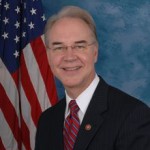 President Obama’s Council of Economic Advisers (CEA) has issued its valedictory report on the state of Obamacare. The gist of the argument is that Obamacare is doing fine, on the verge of overcoming its growing pains since 2014.
President Obama’s Council of Economic Advisers (CEA) has issued its valedictory report on the state of Obamacare. The gist of the argument is that Obamacare is doing fine, on the verge of overcoming its growing pains since 2014.
The CEA claims critics who suspect the 25 percent increase in premiums for 2017 are a problem are off-base. In a normal insurance market, this would indicate a “death spiral”: The sick enroll and the healthy stay away, causing next year’s premiums to increase. The cycle repeats itself until only the sickest enroll. The CEA asserts this cannot be occurring because 11.3 million people enrolled in Obamacare last December, which was 300,000 more than in December 2015. Further, insurers underpriced their policies in 2014 because the market was new. However, they have learned since then and are pricing policies more realistically.
While it is true enrollment in Obamacare’s market is a little higher than last year, it is still well below the Congressional Budget Office’s estimate of 21 million enrollees in 2016, which it made as recently as March 2015. Even in January 2016, it estimated 13 million would enroll last year, which was almost one fifth too high.
Read More » »
 Backroom policy deals have been described as akin to making sausage. You don’t really want to see it done or you’d lose your appetite. The new senate health bill is more like meat loaf than sausage, however. By that I mean a recipe composed of delicious ingredients mushed together with really distasteful ones in an unappetizing blob that could have been a great burger but wasn’t. Remember that 1977 song “Two Out of Three Ain’t Bad” by the band Meat Loaf? That pretty much sums up the senate health reform bill.
Backroom policy deals have been described as akin to making sausage. You don’t really want to see it done or you’d lose your appetite. The new senate health bill is more like meat loaf than sausage, however. By that I mean a recipe composed of delicious ingredients mushed together with really distasteful ones in an unappetizing blob that could have been a great burger but wasn’t. Remember that 1977 song “Two Out of Three Ain’t Bad” by the band Meat Loaf? That pretty much sums up the senate health reform bill.






